Wenn Sie Produkte auf dem Google Cloud Marketplace anbieten möchten, müssen Sie die folgenden Anforderungen für Einträge erfüllen. Außerdem müssen Sie die operativen Best Practices für die von Ihnen angebotenen Produkttypen einhalten.
Wenn Sie Änderungen an Ihrem Produkt oder Ihrer Organisation vornehmen, die sich auf die Einhaltung dieser Eintragsanforderungen auswirken oder die Dokumentation ungültig machen, die Sie Google während des Onboardings zur Verfügung gestellt haben, müssen Sie Google benachrichtigen und Ihr Produkt zur erneuten Überprüfung und Genehmigung einreichen.
Anforderungen an Ihre Organisation
Ihre Organisation muss am Partner Advantage-Programm teilnehmen und einen einwandfreien Status haben.
Nachdem Ihre Organisation Partner Advantage beigetreten ist, erhalten Sie Zugriff auf Partner Hub.
Ihre Organisation muss zu einer der unterstützten Regionen gehören.
Ihre Organisation muss ein Cloud Marketplace-Anbieterkonto und ein Zahlungsprofil in gutem Zustand haben.
Anforderungen an Ihr Produkt
Ihr Produkt muss produktionsbereit sein (nicht in Alpha- oder Betaversion), damit es im Cloud Marketplace öffentlich aufgeführt und verkauft werden kann.
Ihr Produkt muss für Unternehmen geeignet sein, einschließlich einer professionellen Onlinepräsenz, einer definierten Verkaufsstrategie, Kundensupport und Einhaltung strenger Best Practices für die Sicherheit.
Ihr Produkt darf keine bekannten Sicherheitslücken, Viren, Spyware, Trojaner oder anderen schädlichen Code jeglicher Art enthalten.
Sie müssen während des Onboardings in einem Genehmigungsprozess bestätigen, dass Sie Ihr Softwareprodukt hauptsächlich aufGoogle Cloudhosten. Google Cloud Die folgenden Muster sind gängige genehmigte Anwendungsfälle:
Muster 1:Ihr gesamtes Produkt und alle zugehörigen Komponenten werden vollständig auf Google Cloudausgeführt. Das folgende Architekturdiagramm zeigt ein Beispiel für dieses Muster.
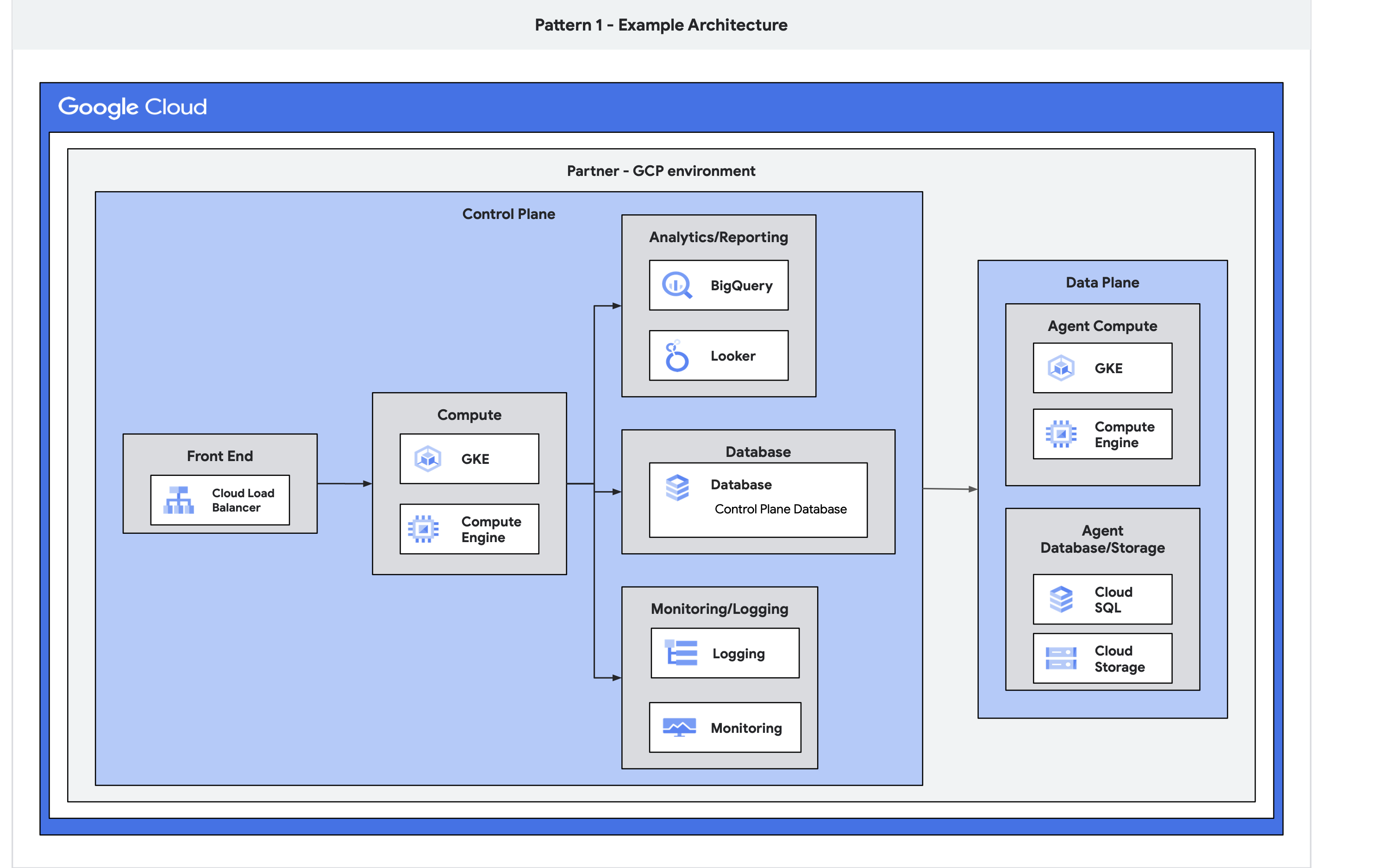
Muster 2:Die Compute- oder Datenebene Ihres Produkts wird aufGoogle Cloudausgeführt, kleinere Steuerebenen oder Supportinfrastrukturen wie Logging oder KI-Inferenzen werden lokal oder in einer anderen Cloud ausgeführt. In diesem Fall muss die vonGoogle Cloudgehostete Compute- oder Datenebene die Ressource sein, deren Verbrauch am schnellsten steigt, wenn Ihre Nutzer ihren Verbrauch erhöhen. Das folgende Architekturdiagramm zeigt ein Beispiel für dieses Muster.
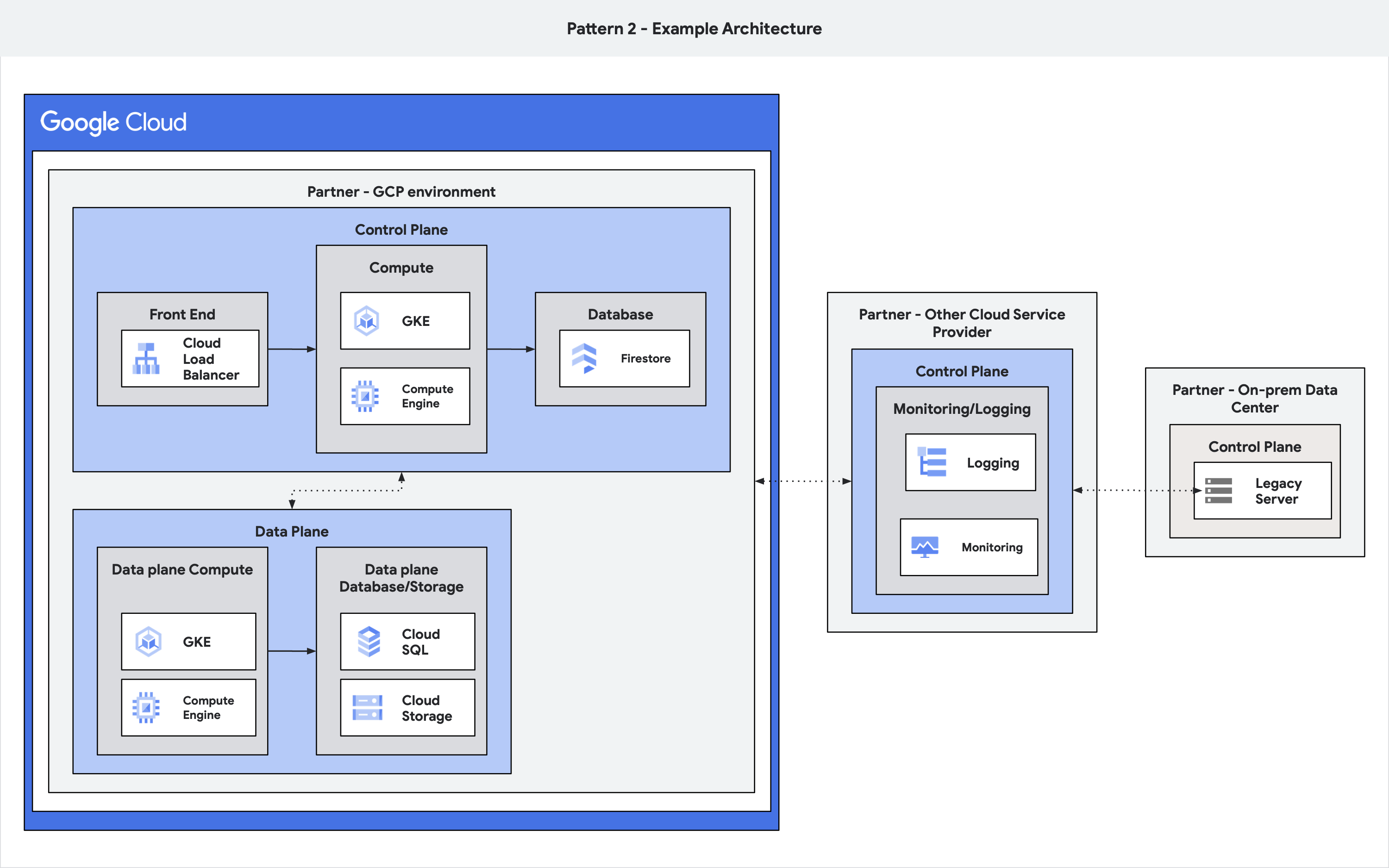
Muster 3:Ihr Speicher-, Sicherungs-, Replikations- oder Datenwiederherstellungsprodukt muss alle Daten auf Google Cloudreplizieren. Die Kontrollebene des Produkts kann lokal oder in anderen Clouds ausgeführt werden. Das folgende Architekturdiagramm zeigt ein Beispiel für dieses Muster.
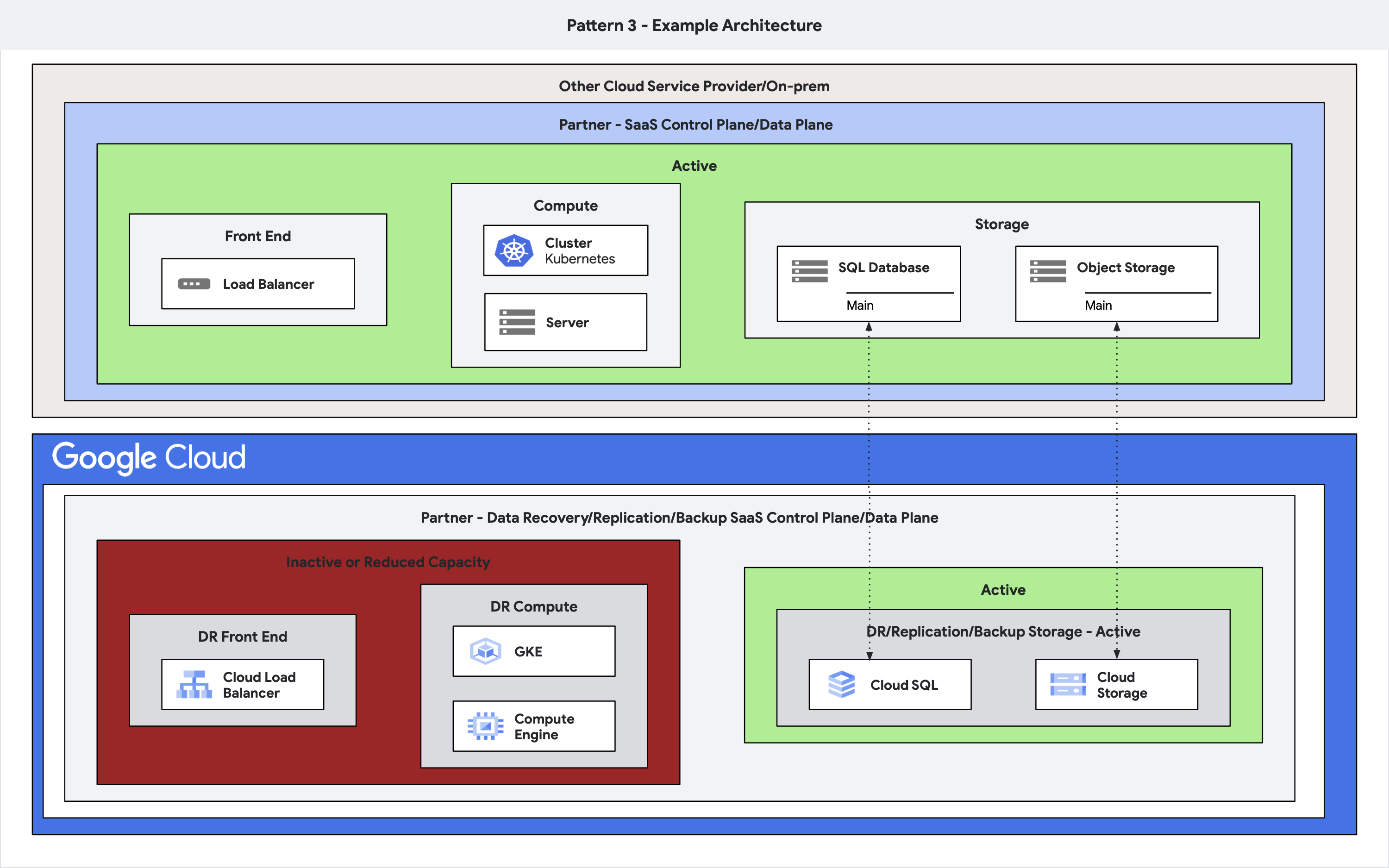
Muster 4:Ihr Produkt ist ein Migrationstool, dasGoogle Cloud als einziges Migrationsziel hat, aber lokal oder in einer anderen Cloud als Migrationsquelle ausgeführt werden kann. Das folgende Architekturdiagramm zeigt ein Beispiel für dieses Muster.
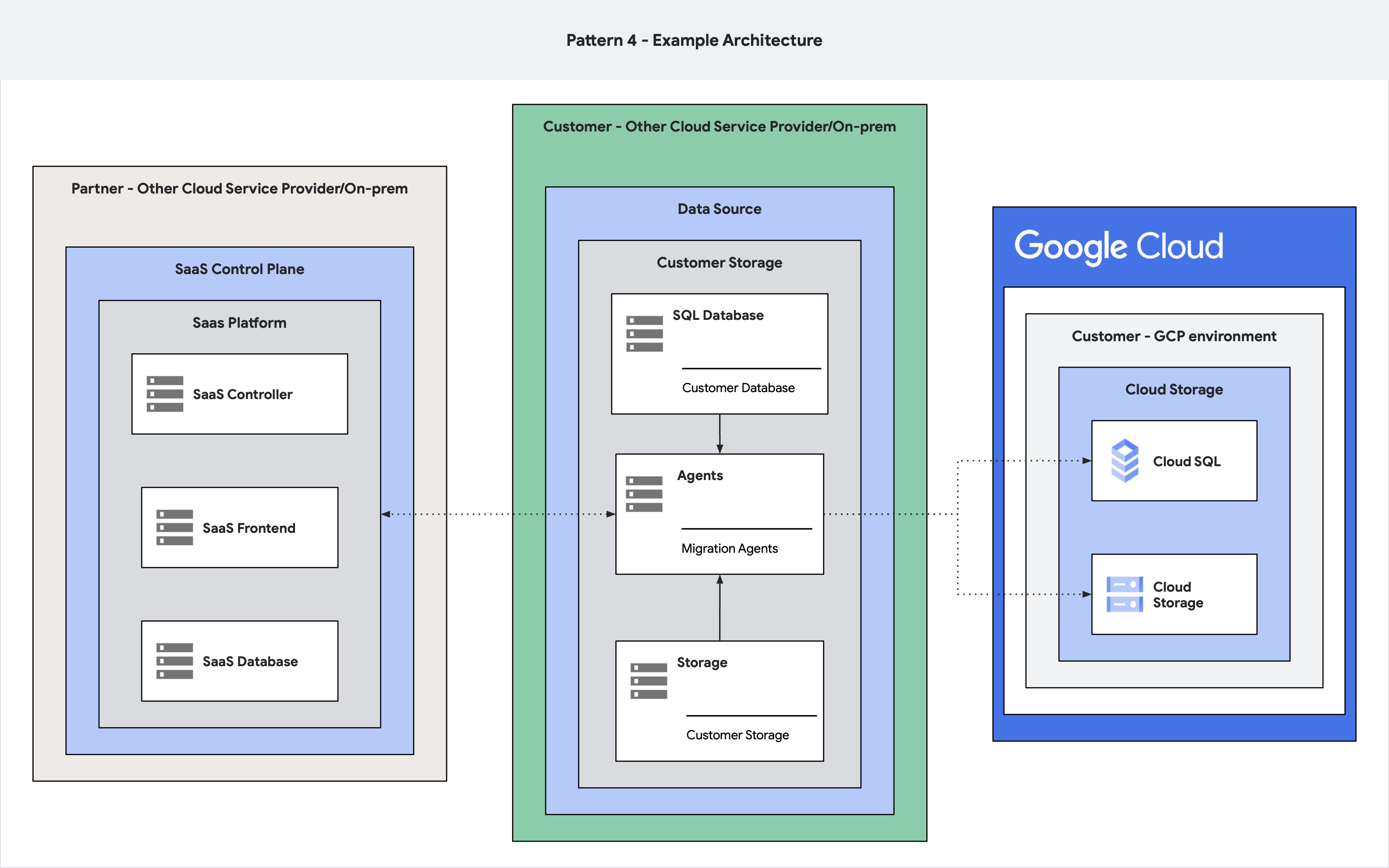
Muster 5:Die Compute- oder Datenebene Ihres Produkts wird aufGoogle Cloudausgeführt. Die Monitoring- oder Sicherheitsagenten Ihres Produkts können lokal oder in einer anderen Cloud ausgeführt werden, müssen aber Daten zum Speichern und Analysieren an eine vonGoogle Cloudgehostete Umgebung senden. Das folgende Architekturdiagramm zeigt ein Beispiel für dieses Muster.
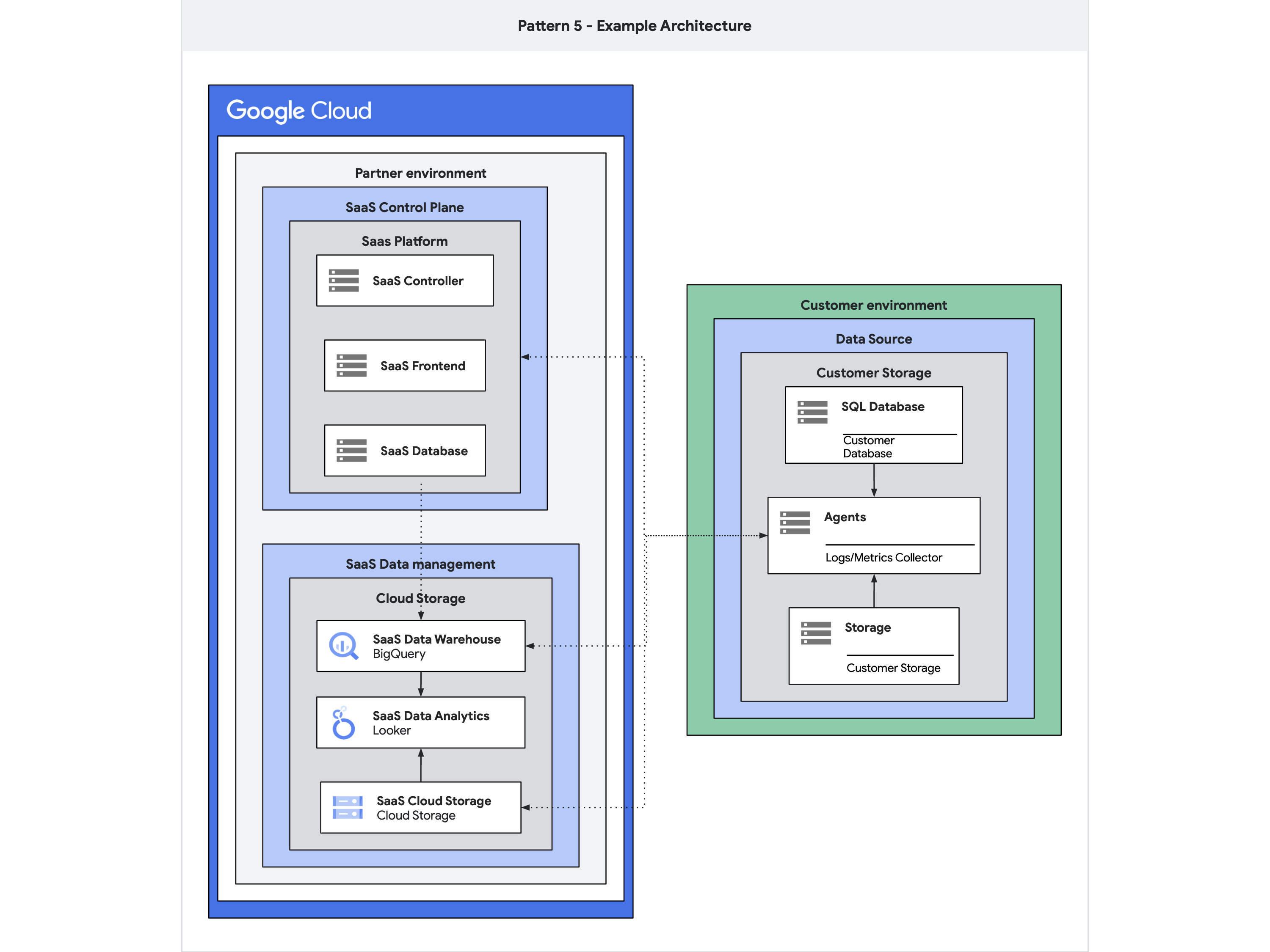
Muster 6:Ihr Produkt ist ein Datensatz, der aufGoogle Cloudgehostet und überGoogle Cloudbereitgestellt wird. Das folgende Architekturdiagramm zeigt ein Beispiel für dieses Muster.
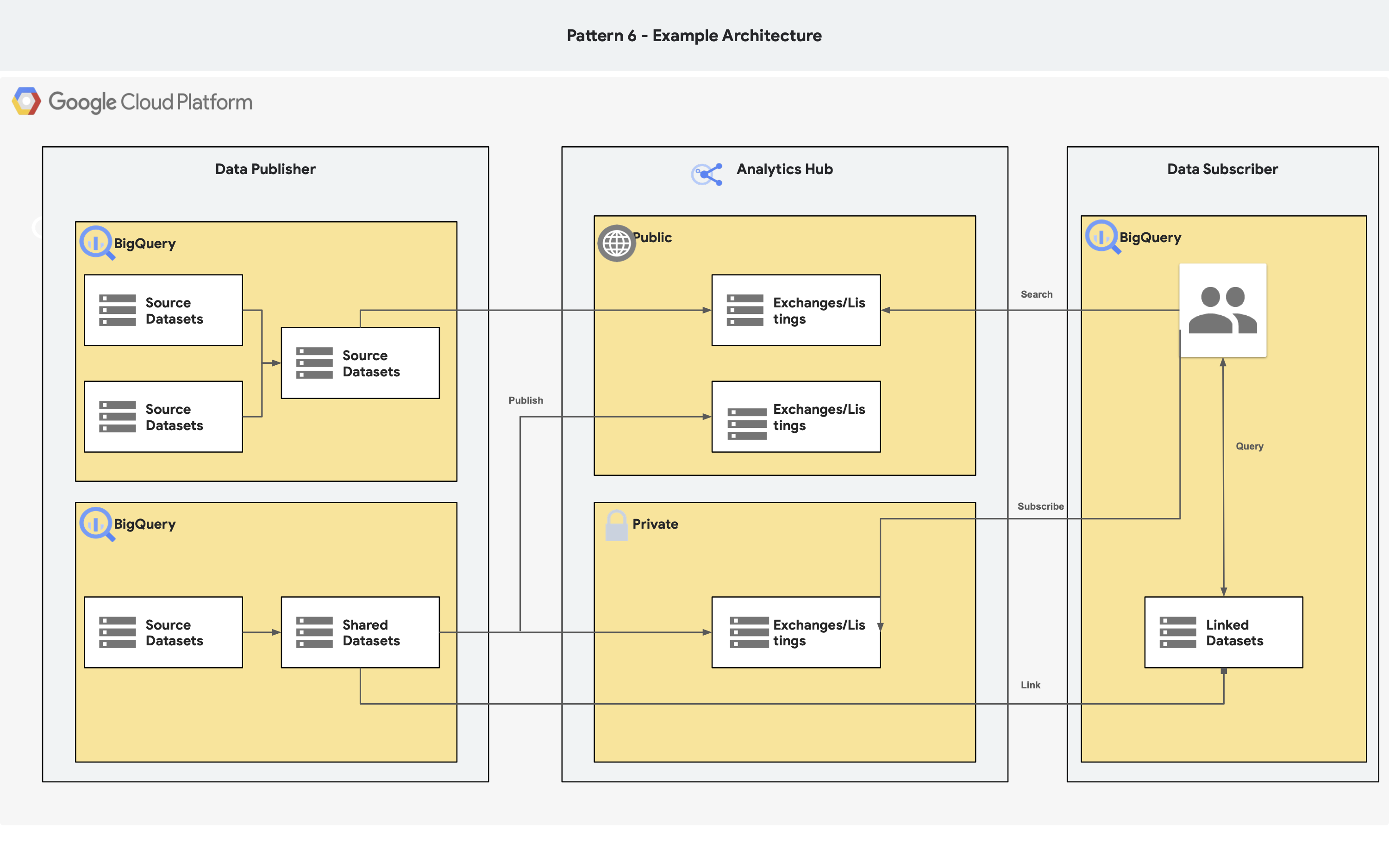
Muster 7:Ihr Produkt ist eine virtuelle Maschine (VM) oder ein Kubernetes-Produkt, das auf Geräten bereitgestellt und ausgeführt wird, die mit der Google Distributed Cloud verbunden sind. Ihr Produkt kann eine Verbindung zum Internet herstellen, um mit anderen von Google Cloudgehosteten Apps oder Diensten zu interagieren. Das folgende Architekturdiagramm zeigt ein Beispiel für dieses Muster.
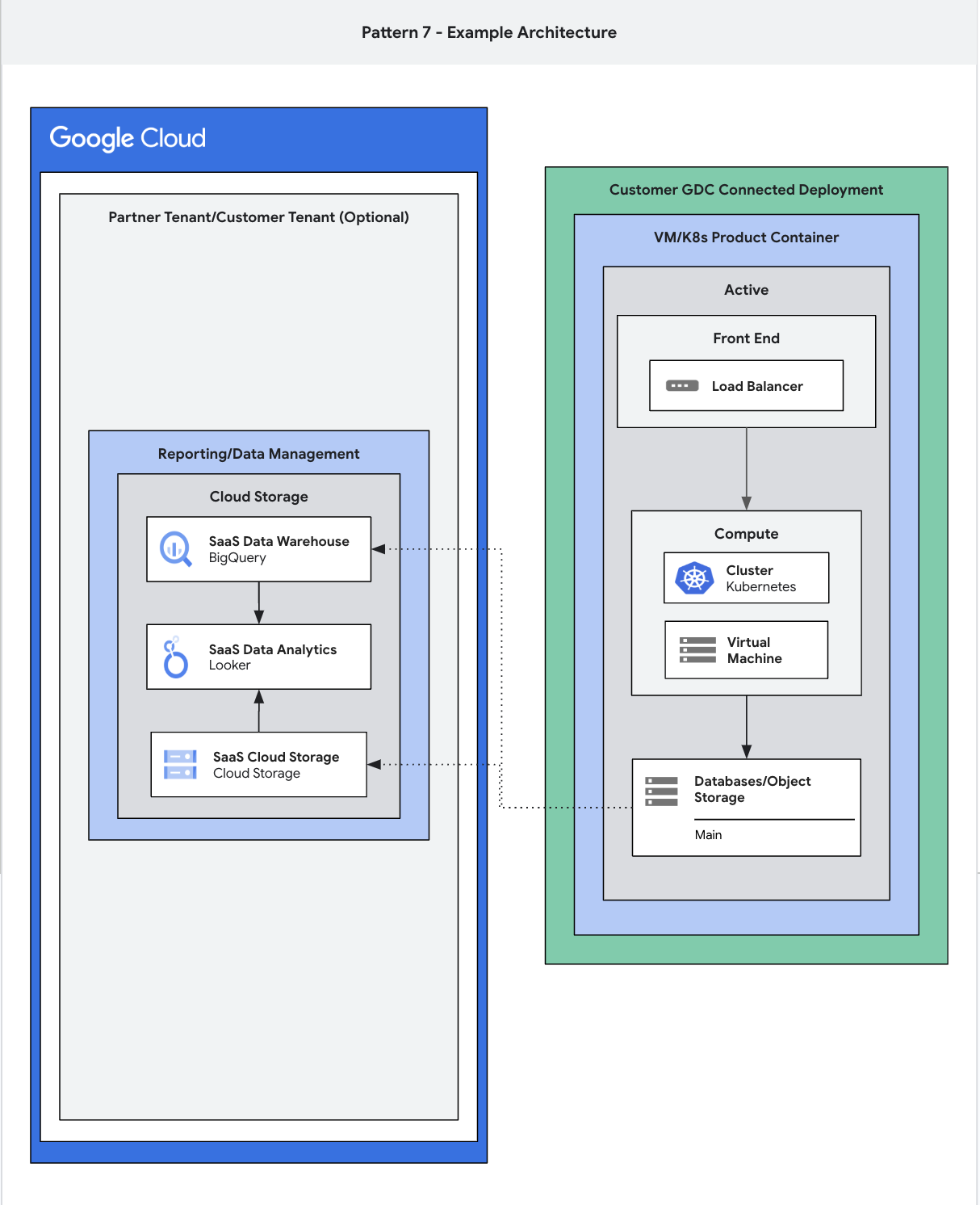
Ihre Produkte im Cloud Marketplace müssen dieselben Funktionen und Merkmale wie alle Versionen dieser Produkte haben, die Sie außerhalb des Cloud Marketplace anbieten.
Ihre Datenprodukte dürfen keine „vertraulichen personenidentifizierbaren Informationen“ enthalten, wie im Gesetz zum Schutz der Daten von US-Bürgern vor ausländischen Gegnern von 2024 definiert.

